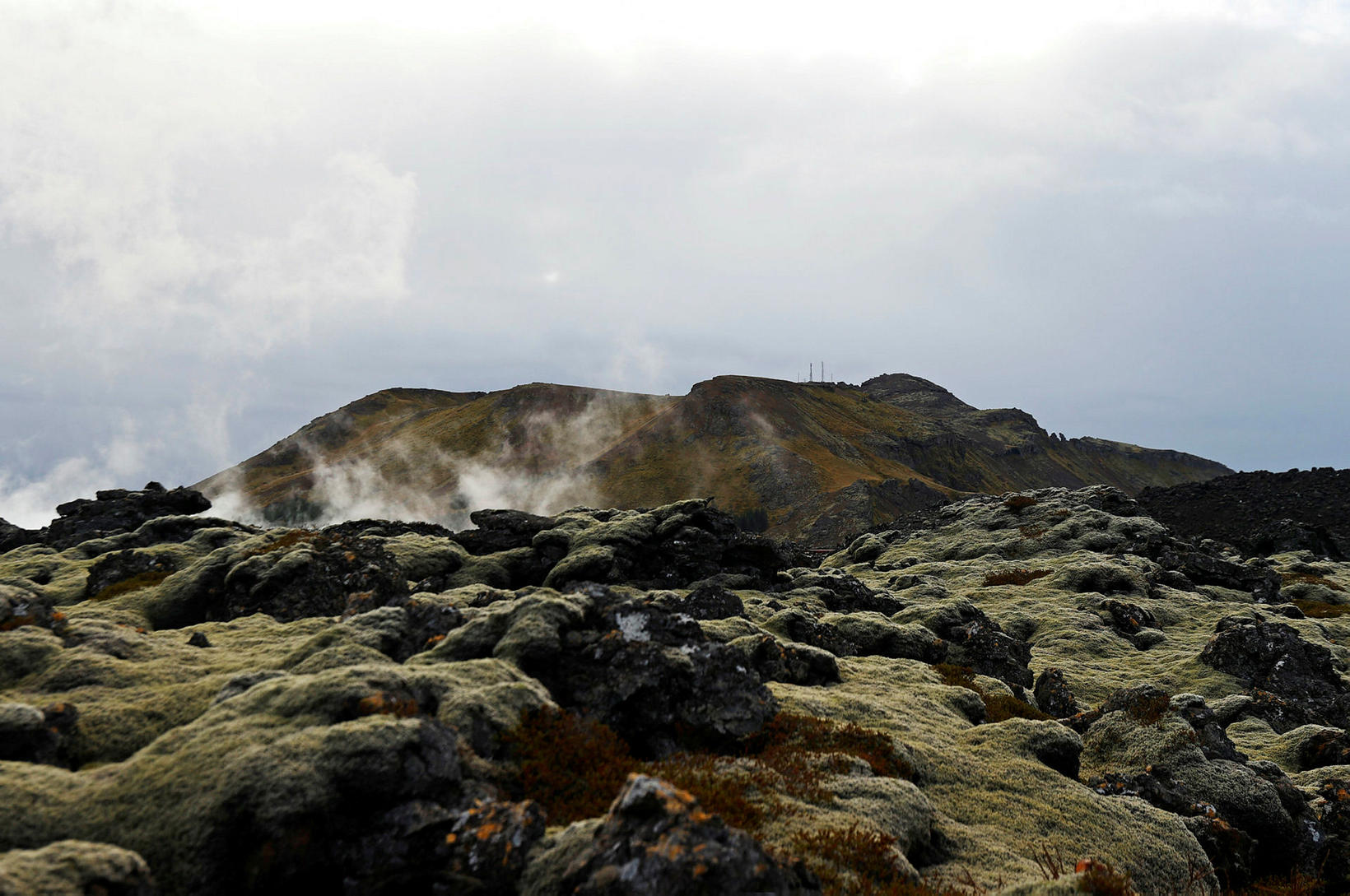Looking across the lava field toward Mt Þorbjörn, which rises southeast of Mt Sýlingafell.
mbl.is/Eggert Jóhannesson
Dozens of small earthquakes east of Sýlingafell last night suggest that the wait for the next eruption on the Reykjanes Peninsula may be nearing its end, according to experts at the Icelandic Meteorological Office.
“The magma is approaching a breaking point”
“There was microseismic activity east of Sýlingafell last night that began around eight o’clock and lasted for about an hour before it subsided,” says Sigríður Magnea Óskarsdóttir, a natural hazards specialist on duty at the Icelandic Meteorological Office.
Does this tell us anything significant?
“It mainly tells us that the eruption is naturally getting closer. We’ve seen this kind of activity before—typically a few weeks before an eruption begins. It means that the magma is nearing some kind of fracture or weakness in the crust.
Pressure inside the magma chamber continues to build, but the question is always when that pressure becomes high enough to trigger a magma intrusion and ultimately an eruption. It’s difficult to pinpoint exactly when that happens.”
Perhaps a month—or less—until eruption
Óskarsdóttir says last night’s activity indicates that this critical moment is drawing nearer.
“Based on past experience, we might expect an eruption in two to three weeks, maybe a month,” she says.
“The same thing happened before the eruption last November — there was a small swarm around November 4th, and the eruption began on the 20th or 21st, if I recall correctly.
In May of last year, a similar swarm occurred on the night of May 10th, and the eruption followed on the 29th. Whether this is the same pattern remains to be seen, but it’s something we have to be prepared for.”
She adds that there has been virtually no seismic activity in the area since the eruption ended this summer, which made last night’s swarm stand out and immediately alert the Meteorological Office’s internal monitoring systems.
“Then it just died down again. There was no measurable ground deformation, only earthquakes,” she says.

